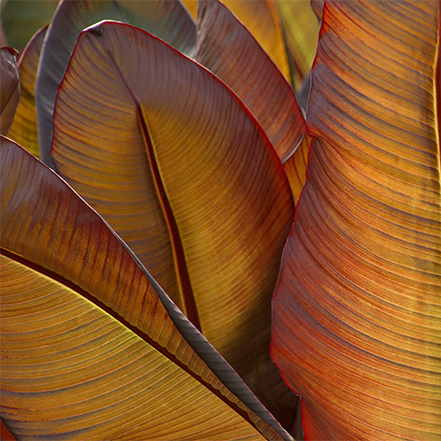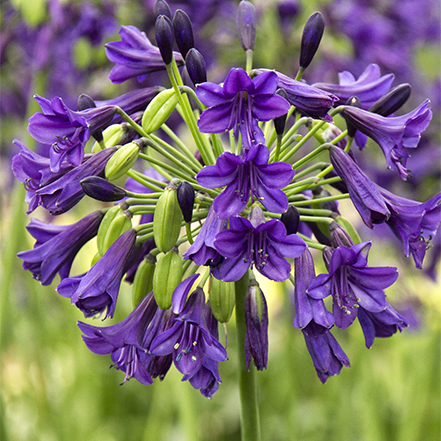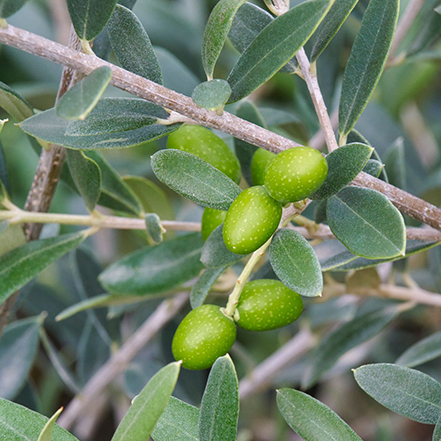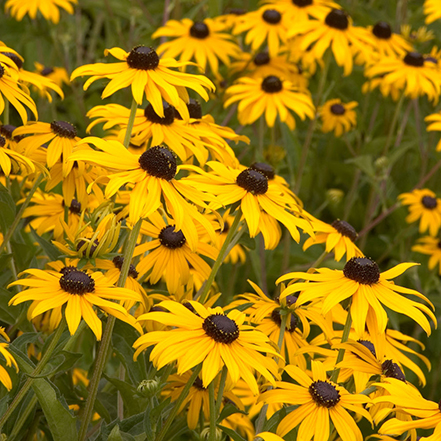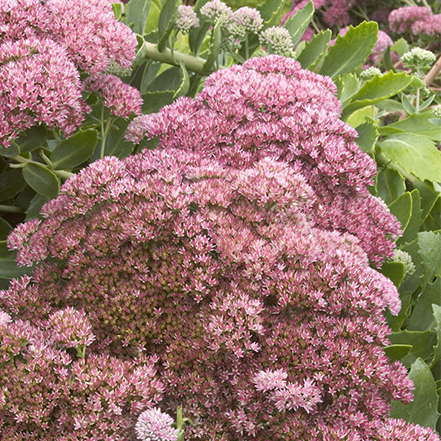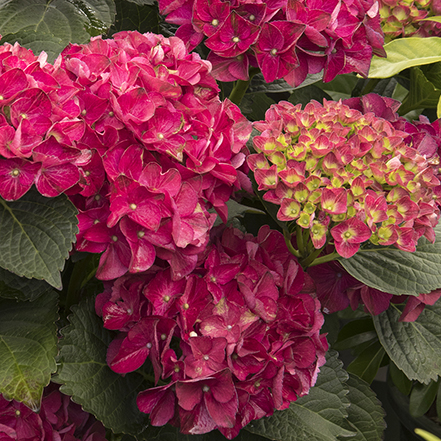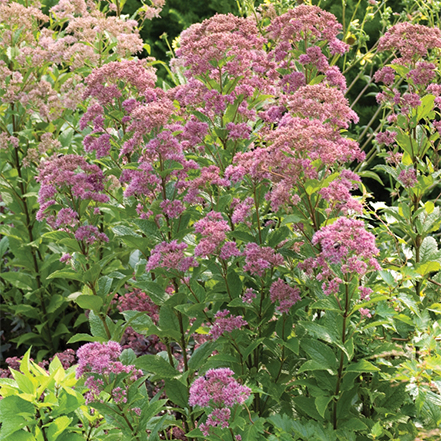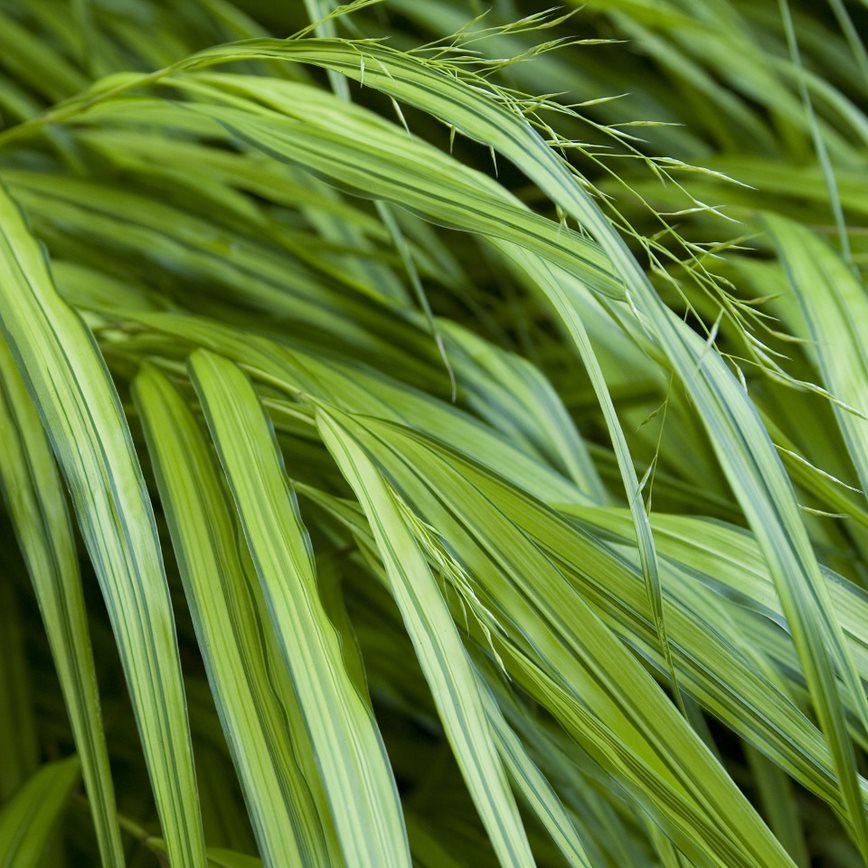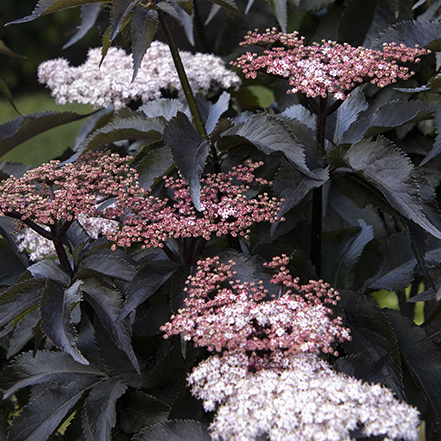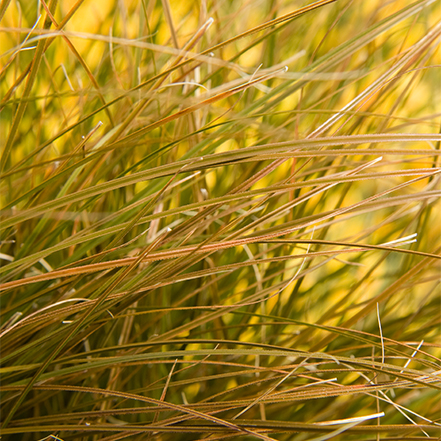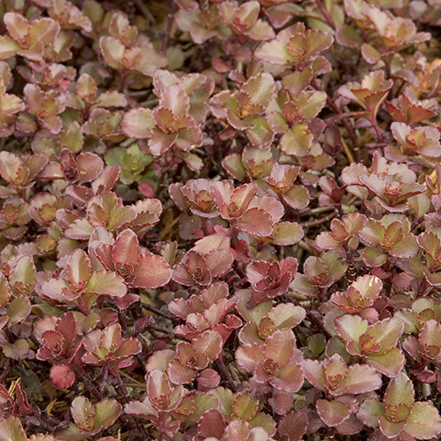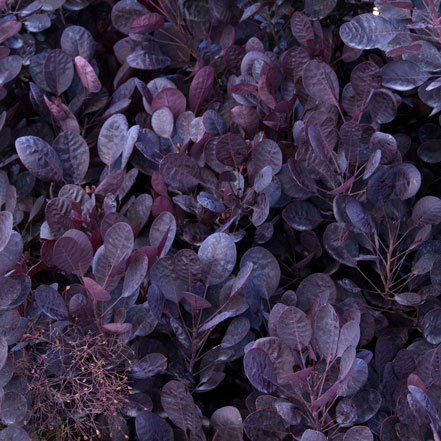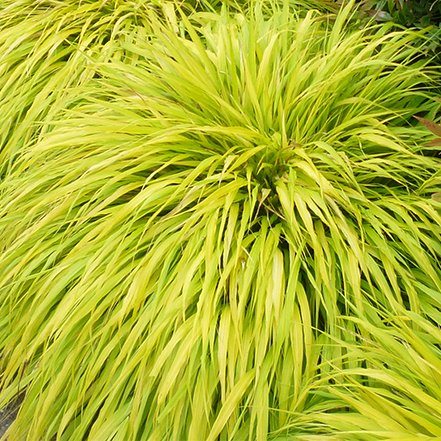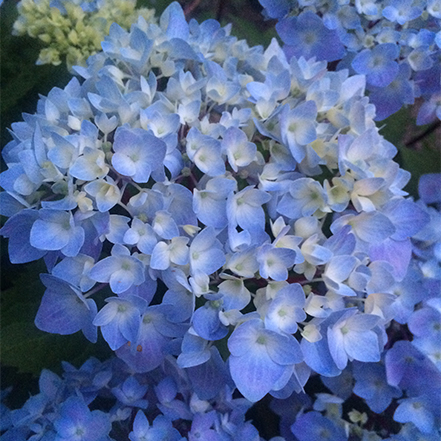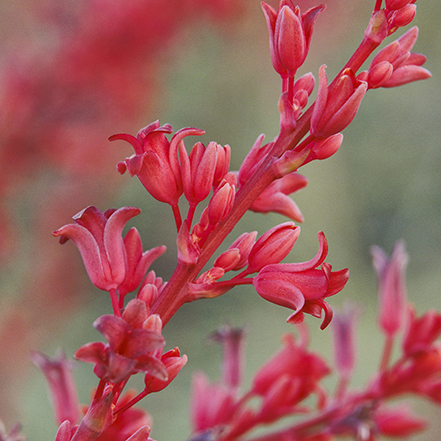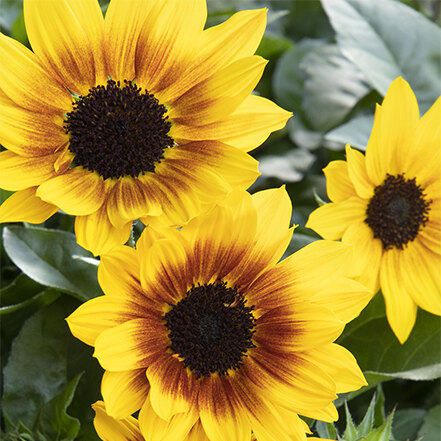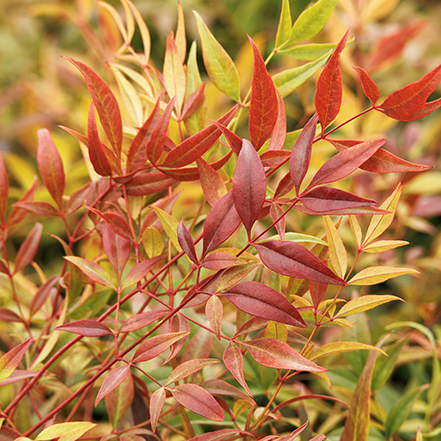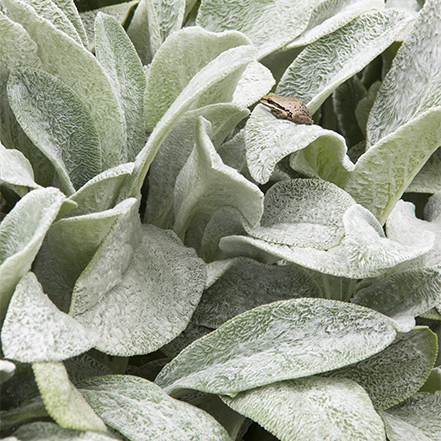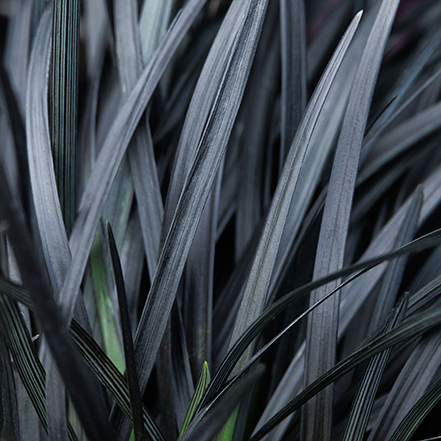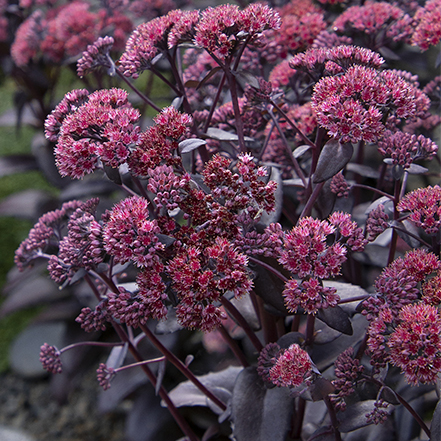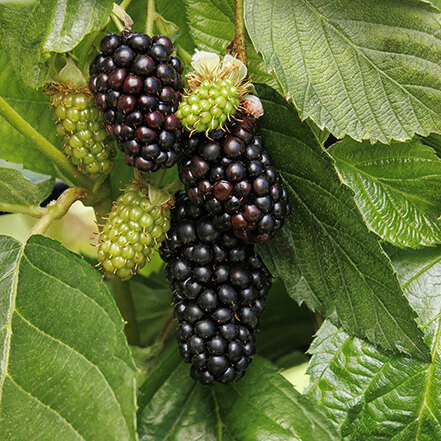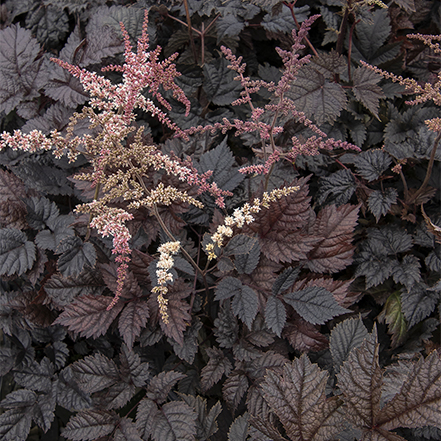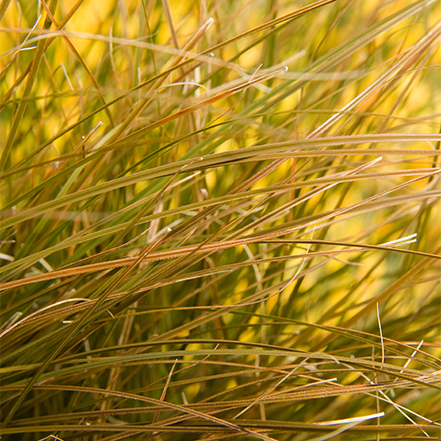In the past few years, plant breeders have been focused on bolder and brighter colors in new perennials and flowering shrubs. It's not difficult to understand why: one of the reasons we love to garden is that it brings us joy and lifts our spirits, and bright colors can enhance that feeling.
For spring 2025, we have selected new lavenders in deeper shades of purple, echinacea in brighter tones from pink to red, and lantanas in fiesta yellows and reds. Roses are also getting a juicy new makeover, with berry colors and rich reds surging in popularity.
How to use these bolder colors to freshen up your garden this year? Think of these plants as joyful punctuation marks. You can let one color be the star among a sea of green foliage, or complement a bright new perenninal or shrub with echoes of the same color in lighter tones. White also pairs beautifully and dramatically with these bold colors.
That said, there are some useful guidelines for how to approach choosing a color scheme for your backyard which we hope will help you tap into your creative side as you allow your inner artist to shine in the garden.
First, we'll start with some informative discussion about the color wheel and color theory. Our goal here is to help you see your entire outdoor space and create a plant color palette that completes the picture.
(Above) The bright pink of Seaside Serenade® Martha’s Vineyard hydrangeas pops against the soothing evergreen hedges in this garden that needs little other color to make an impact.
Then, we'll dive into 3 professionally designed gardens and color design tips from their designers. Finally, find some fun plant color palette ideas to jump start your creative flow.
Nature gave us a big box of crayons. Get ready to play with color.
Let's Get Creative: How to Use Color in the Garden
Color Theory 101
While we could write an entire story about color theory and how the brain sees and responds to color, here's the basic idea when it comes to understanding color combinations.
There are three primary colors—blue, red, and yellow — that can be mixed in different ways to make all other colors. A color wheel allows you to see which colors work together at a glance.
There are at least six different color schemes to choose from and they mostly refer to positions on the color wheel. Here are the top four:
- Complementary combos use colors that are opposite each other on the color wheel. These are high contrast schemes that visually excite. (Purple and yellow are an example.)
- Analogous combos use colors that are next to each other on the color wheel. These blend well for more visually harmonious schemes. (Purple and red are an example.)
- Primary combos are just that. Red, blue and yellow.
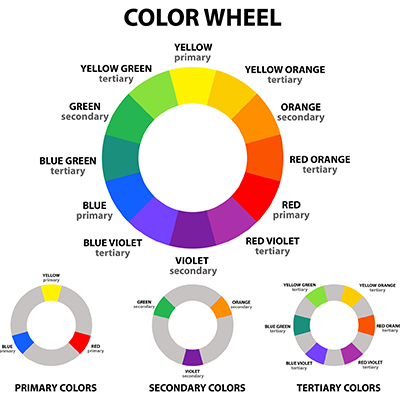
- Monochromatic combos use one color and its various values (tints and shades). These are visually soothing.
So what does all of this mean? Understanding the basics of color can help you to create pleasing color combinations. This can help you to make the mood you are looking for in your garden.
Image: iStock/Getty Image Plus
How Three Top Designers Use Color
We asked three of our favorite garden designers for examples and advice about using color in the garden. You will notice none of them shy away from broad strokes of color for a most painterly effect. Below you'll see three different examples of how color can be used to different effects: boldly monochromatic, soft and sweet pastels (with a surprise pop of color), and a study in elegant color contrast.
1. Bold Monochrome
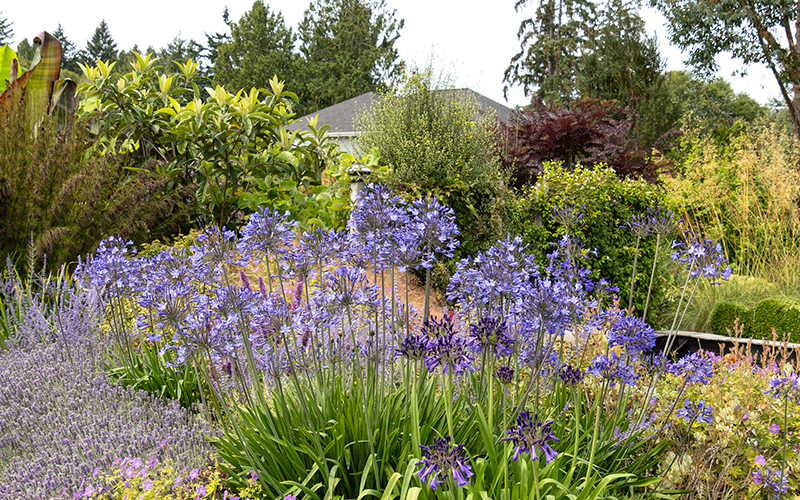
In her personal garden, Susan Calhoun of Plantswoman Design illustrates an example of how to use analogous colors for a big impact. Notice how her stand of ‘Blue Leap’ agapanthus, ‘Hidcote’ English lavender, and hardy geranium 'Blogold' Blue Sunrise blends with the reddish foliage shrubs beyond for a soothing effect.
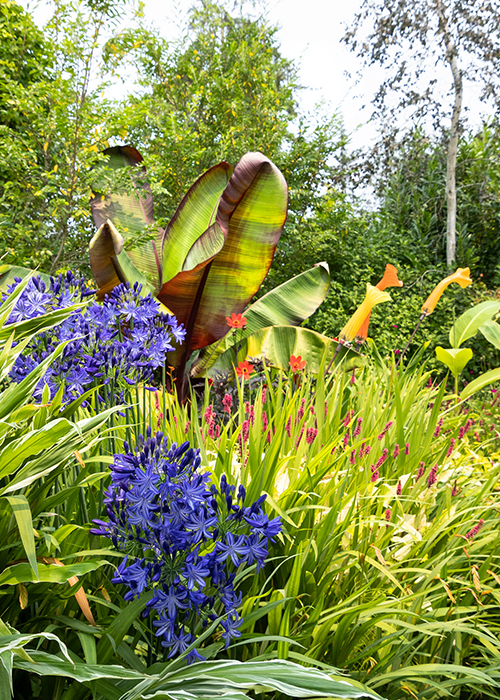
Agapanthus ‘Blue Leap’ , Red Leaved Banana, Zingiber mioga ‘White Feather’ (a type of ginger), and Persicaria ‘Golden Arrow’ (in the knotweed family)
Moving further into this Pacific Northwest garden, you'll find that Susan selected plants for their colors and forms, but also because they can withstand months of almost daily rain. While there are some bright colors here, there are no jarring "pops" of color. This illustrates a great lesson for how to crank up the impact with the addition of just a few statement plants.
Check out this peaceful retreat and this woodland garden also designed by Susan to see more examples of how she works her magic with color. Do you love the look of a simple color palette? Here's an entire design story about the power of a simple plant palette.
Get This Look
Anouk Purple Flare
Spanish Lavender
Deep purple flower spikes on a more compact variety that stands up to summer heat and drought. Rabbit and deer resistant. Full sun. Up to 14-18" tall and 12" wide. Zones 6-10.
Red Leaved
Banana
Palm-like plant with huge, wine-red and bronze tones broad leaves that fan out from a single trunk. Full sun. Up to 15" tall, 10' wide. Zones: 10-11.
Purple Potion®
Agapanthus
Noted for its clusters of deep biolet blooms — a shade that's unique for agapanthus. Full sun. Up to 12" tall and 26" wide. Zones 7-10.
2. Soft and Sweet
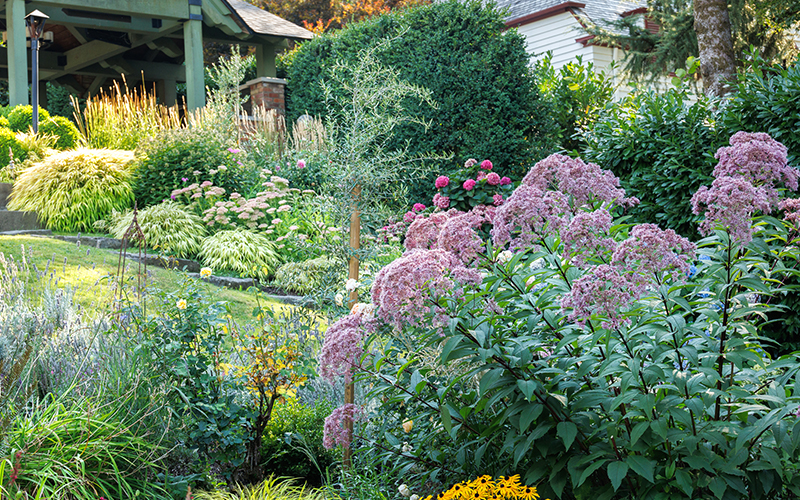
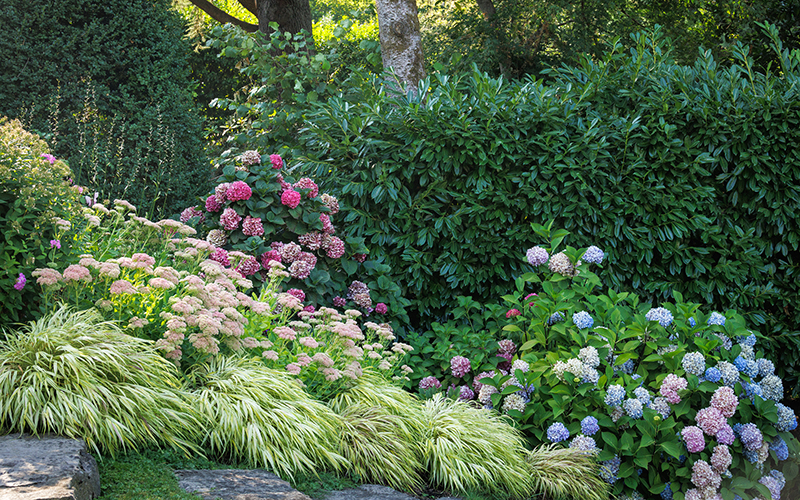
Based in Portland, OR, Wes Younie of Wesley Younie Landscape Design is both a fine artist and a landscape designer. In this romantic garden set on a sloped site, he used cues from the existing structures to create a palette of complementary colors. Hydrangeas, Joe Pye weed, olive trees, grasses, and sedums in soft purple, pink, and cream bring the blue hue of the house into the landscape for an always-been-there look. (We love those touches of silvery-green!)
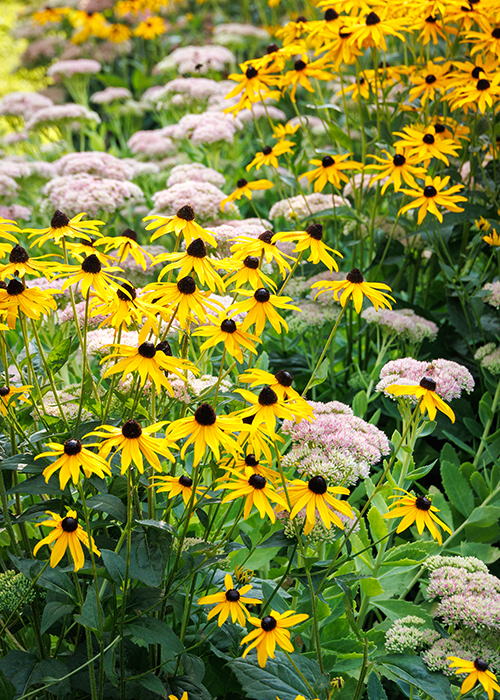
While the mood of this garden is cool and misty, Wes shows us how to shake things up and keep the eye moving with a shot of yellow in the midst of it all.
A perfect example of complementary colors, this stand of Autumn Joy sedum and Rudkeckia is playful but also has an easy co-existence and harmonious combination with the space.
Wes used just a few different types of plants, but he uses them all en masse. Other plant here include:
Seaside Serenade® Cape Hatteras Hydrangea
Obedient Plant (Physostegia virginiana)
(Read advice on how to approach color from Wes below.)
Get This Look
Arbequina
Fruiting Olive
Self-fruiting olive prized for highly aromatic oil content, brown fruit, and silvery- green foliage. Full sun. Up to 40' tall. Zones 8-11.
Goldsturm
Black-Eyed Susan
Bright, daisy-like, golden yellow flowers with black centers. Tolerates heat, humidity, and clay soil. Full sun. Up to 2' tall and wide. Zones 3 - 9.
Autumn Joy
Sedum
Large, plate-like flower clusters that start pink, then gracefully age to rosy russet-red in the fall. Full sun. Up to 2' tall and wide. Zones 4 - 11.
Seaside Serenade® Cape
Hatteras Hydrangea
Long-lasting ruby red color is not influenced by soil pH. A compact variety with bright green, thick foliage, perfect for massing in the landscape or for use in containers. Partial shade. Up to 3' tall and wide. Zones 4-9.
Golden Japanese
Forest Grass
Slender stems hold bright yellow leaves with thin green stripes, creating a tiny bamboo-like effect. Foliage becomes pink-tinged as the weather cools in autumn. Part shade to part sun. Up to 18" tall and wide. Zones 4-9.
3. A Study in Contrasts
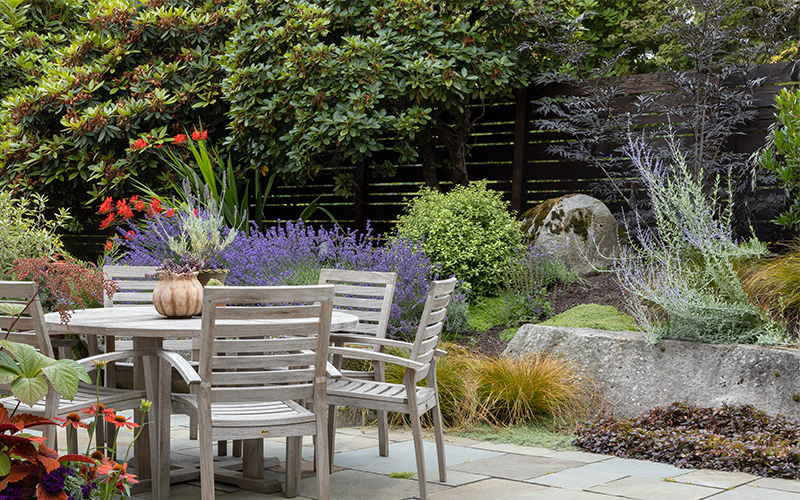
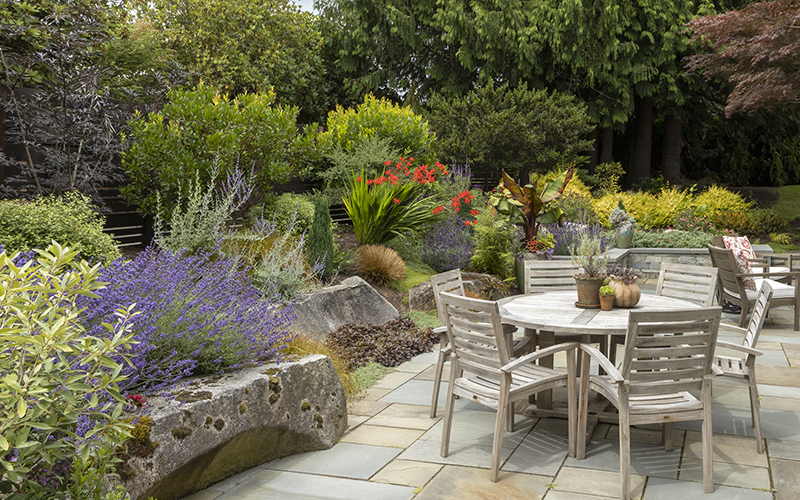
The color palette for a garden starts with two considerations: to what colors are the owners drawn and what works in the space. In this Pacific Northwest garden, designed by Robin Parsons of Spring Greenworks, drought-tolerant color that can take the heat, including Ceanothus, Crocosmia, dwarf conifers, hardy Fuchsias, Rhododendrons, and Salvias reflects both.
As temperatures have risen in the summer in this region, Robin has begun to use plants that were once a challenge to grow, such as Grevillea, olives, and jasmine. Colors were selected to balance with the pale yellow exterior paint color. She drew inspiration from that color for the muted palette of purples, silvers and blues and added doses of contrasting yellow and red culled from the lively furnishings inside the house.
Bluestone flooring and ledge stone walls along with scattered boulders are important neutrals that work to further amplify the colors of this garden. The fence was stained a deep charcoal so that it disappears behind the greenery and blooms. The entire effect is a jewel box of color and texture.
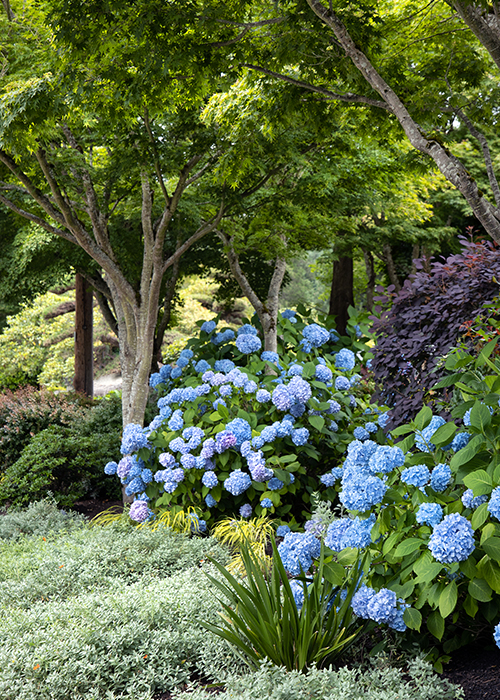
Under the dappled light of trees, this border is a study in contrast. Cool colors (blues and purples) and pale shades like the Helianthemum 'Henfield's Brilliant' in the foreground create a sense of depth in the garden. The dark smokebush recedes allowing the brilliant blue hydrangeas to take center stage.
Get the look of this garden with these plants: Bronze Carpet Stonecrop, Dwarf, Strawberry Tree, Blue Jean Baby Russian Sage, Golf Ball Pittosporum, and Lilla Smoke Bush
Choosing plants with multi-seasonal interest and ornamental attributes such as colored foliage, flowers, berries, and bark keeps this garden interesting year-round.
See Robin's entire Medina garden project here.
Get This Look
Black Tower
Elderberry
Burgundy foliage on an upright shrub, with -pink spring flowers and blackish red fall berries adorded by birds. Full sun. Up to 8' tall and 4' wide. Zones: 4-8.
Orange New Zealand
Sedge
Finely textured, bronze-green leaves age to electric orange in the cool season. Full to part sun. Up to 24" tall and wide. Zones: 6 - 10.
Bronze Carpet
Stonecrop
This beautiful trailing succulent forms a lush, ground-hugging mat of bronze-red foliage that provides contrast to green or gray-leaved plants. Part to full sun. Up to 6" tall, 24" wide. Zones 3-9.
Lilla
Smoke Bush
A dwarf form with frothy plumes of pink flowers that rise above the wine-red foliage in the summer. Oval leaves turn shades of bright orange, coral, and red in the fall. Part to full sun. Up to 4' tall and wide. Zones 4-10.
All Gold Japanese
Forest Grass
A colorful groundcover for shady areas. Slender stems hold bright golden yellow foliage. Excellent color and texture for mixed borders, containers, and mass plantings. Part shade to part sun. Up to 18" tall and wide. Zones 4-9.
Blue Enchantress®
Hydrangea
Striking ruby-black stems support big mophead flowers on this reblooming hydrangea. Partial sun. Up to 5' tall and wide. Zones: 4 - 9.
Tips for Using Color from the Pros
As seen above, Wes Younie has a way with color in the garden. We asked him to share his top five tips for how to use color to its best effect.
- Consider the entire picture: When deciding on a color scheme, first look around the entire site and take in the hues of the house, any masonry or stonework, and the existing large plants such as mature trees and shrubs. You may decide you want to blend your colorful plants with this scheme or perhaps go bold and create great contrast. Either way, your colorful plants are part of the story, not the entire story!
- Limit your color palette: Less is more when it comes to color in the garden. And more is more when massing plants. Choose several dominant colors and accent them with subordinate colors. You do not want the colors to clash or compete with each other for your attention.
- Use lots of just a few plants: This is a tough one for us plant lovers, but remember the rule of repetition. A design will look too busy unless you repeat colors and shapes throughout the composition. It is always more striking to have large masses of the same plant. There is something magical when you see a huge border or meadow of one plant.
- Consider how light impacts color throughout the season: Pastels are gorgeous under the slanting rays of the sun in the spring. However, as the sun moves directly overhead for most of the day in summer, those pretty colors can get washed out. Think about adding deeper shades that bloom later in the season to get the full effect of your color scheme. That doesn't necessarily mean adding orange to your pastel palette; it could just mean adding an analogous color such as dark purple.
- Add neutrals to warm up or cool down a color scheme: White, silver, and green (flowers or foliage) help to stop the eye from being exhausted by all that color. White creates depth and makes other colors look richer. Green is the perfect backdrop to make colors pop. Silver picks up and bounces light creating gleam and glow.
3 Timeless Color Palettes
Romantic: Bold Classics
Eau de Parfum™
Berry Rose
Big delightfully fragrant blooms on a tidy shrub rose, disease-resistant and grown on its own root. Full sun. Up to 4' tall and wide. Zones: 5 - 9.
Seaside Serenade® Newport
Excellent repeat bloomer with vibrant purple or blue hues in more acidic soil. Sturdy stems and leaves help it stand up to weather. Partial shade. Up to 4' tall and wide. Zones: 4 - 9.
Amore™ Titanium Bleeding Heart
Clusters of pure white flowers that bloom spring all through summer. Extremely vigorous and heat-resistant. Filtered sun or part shade. Up to 18" tall and wide. Zones 4 - 9.
Riotous: Spicy and Bold
Brakelights®
Red Yucca
Compact selection rarely sets seedpods, meaning more prolific flowering over a very long season. Full sun. Up to 2' tall and wide. Zones: 5 - 10
SunBelievable®
Brown Eyed Girl Helianthus
Heat tolerant, non-invasive annual produces over 1,000 flowers in a single season, from spring until first frost. Full sun.
Sienna Sunrise®
Heavenly Bamboo
Intensely red new foliage cools to a lush green in summer. Fiery red highlights reappear in fall and winter. Full sun. Up to 4' tall, 2' wide. Zones: 6 - 11.
Moonlight: White and Silver
Scent from Heaven™
Angel of Purity Dianthus
Exceptionally fragrant frilly white double flowers on compact mounds of gray-green foliage. Full to partial sun. Up to 8" tall and wide. Zones 4 - 9.
Candy Apple™
Hydrangea
Same show-stopping lime green flower clusters as Limelight, but a more compact form. Full to partial sun. Up to 5' tall and wide. Zones: 4 - 8.
Big Ears
Lamb's Ear
Silver-green foliage which forms a dense groundcover of thick, soft, velvety rosettes. Up to 1' tall, 2' wide. Full to partial sun. Zones: 4 - 9.
Black Beard
Mondo Grass
Dramatically grass-like perennial with lilac spiky blooms followed by dark, nearly black fall berries. Partial to full sun. Up to 1' tall and wide. Zones 5 - 10.
Evolution™
Chocolate Fountain Sedum
Dark chocolate-colored, succulent foliage salted with rose-pink summer blooms. Full to partial sun. Up to 15" tall and wide. Zones 4 - 9.
Superlicious™
Blackberry
Thornless dwarf blackberry that presents a fireworks-like display of large, juicy berries in the summer. Full sun. Up to 4 ft tall and wide. Zones 4 - 9.
The Bronze Age: Edgy Metallics
European Meadow
Rush
Grass-like tuft of pencil thin, blue-green stems develops airy, reddish-brown flowers in early summer. Full sun. Up to 3' tall and wide. Zones 3 - 9.
Chocolate Shogun
Astilbe
Vvery dark purple-brown serrated foliage with pale pinkish white plumes. Partial shade. Up to 40" tall, 24" wide. Zones 4 - 8.
Orange New Zealand
Sedge
Finely textured, bronze-green leaves age to electric orange in the cool season. Full to part sun. Up to 2' tall and wide. Zones 6 - 10
After all the hard work of laying out a garden, installing hardscape, plotting paths of desire, planting structural trees and shrubs, the fun starts when you get to add the color. Everyone can be creative with color in the garden or in containers if you know what you like and try to follow some guideance from the pros.
And remember, every "successful" garden is the product of experimentation, trial and error, ace it and fail it. This season, spend some time observing your garden and use color to tell your entire story.
Resources for Using Color in the Garden
Plant Combo Inspo and Design Lessons
Free plant color palettes: Check out our annual garden color guide, Shades of Beautiful, complete with 10 fresh plant color palettes for the year.





